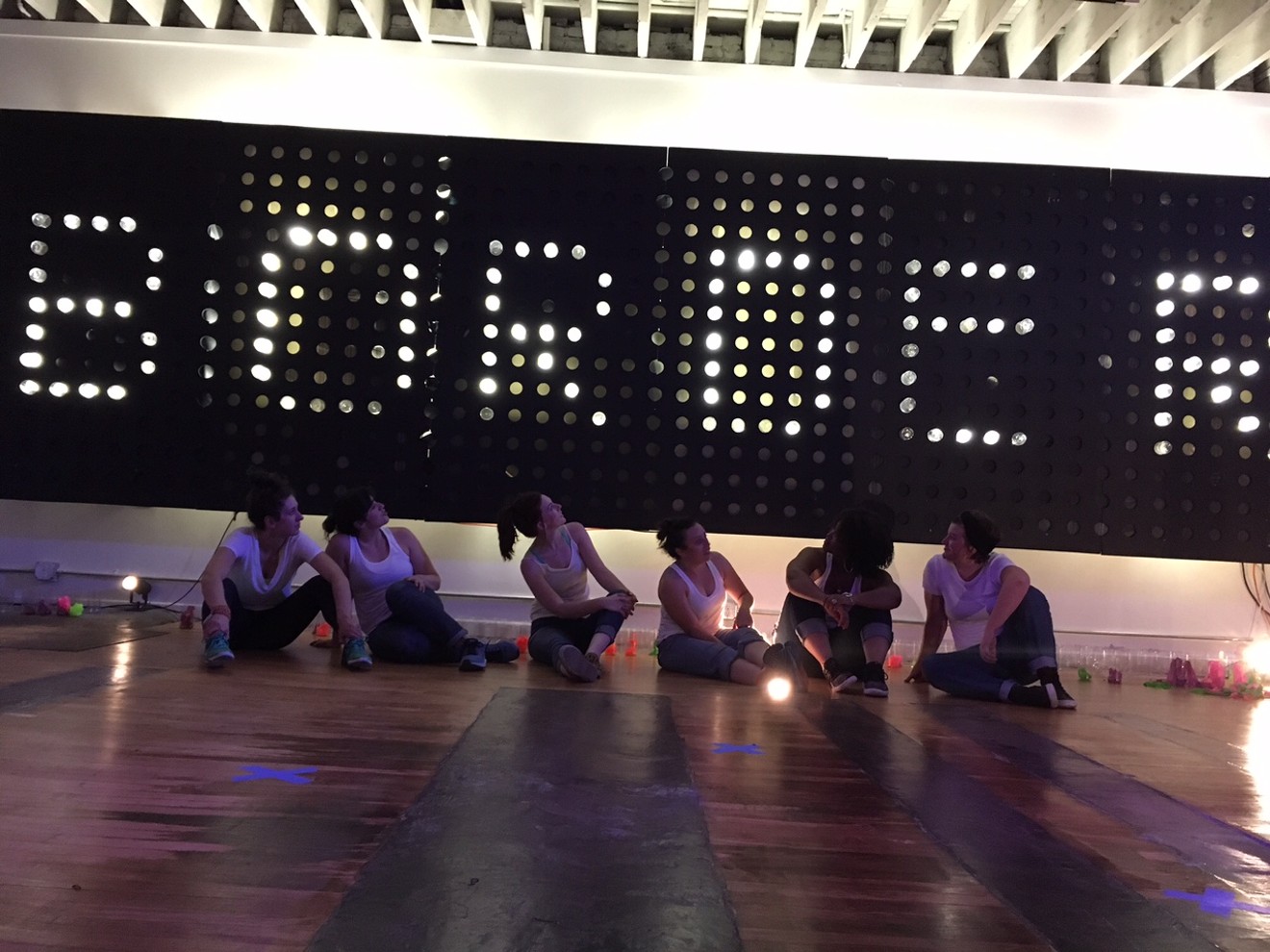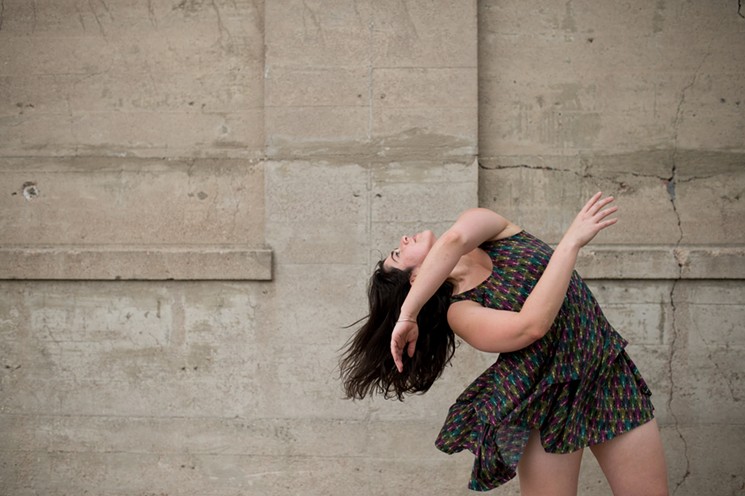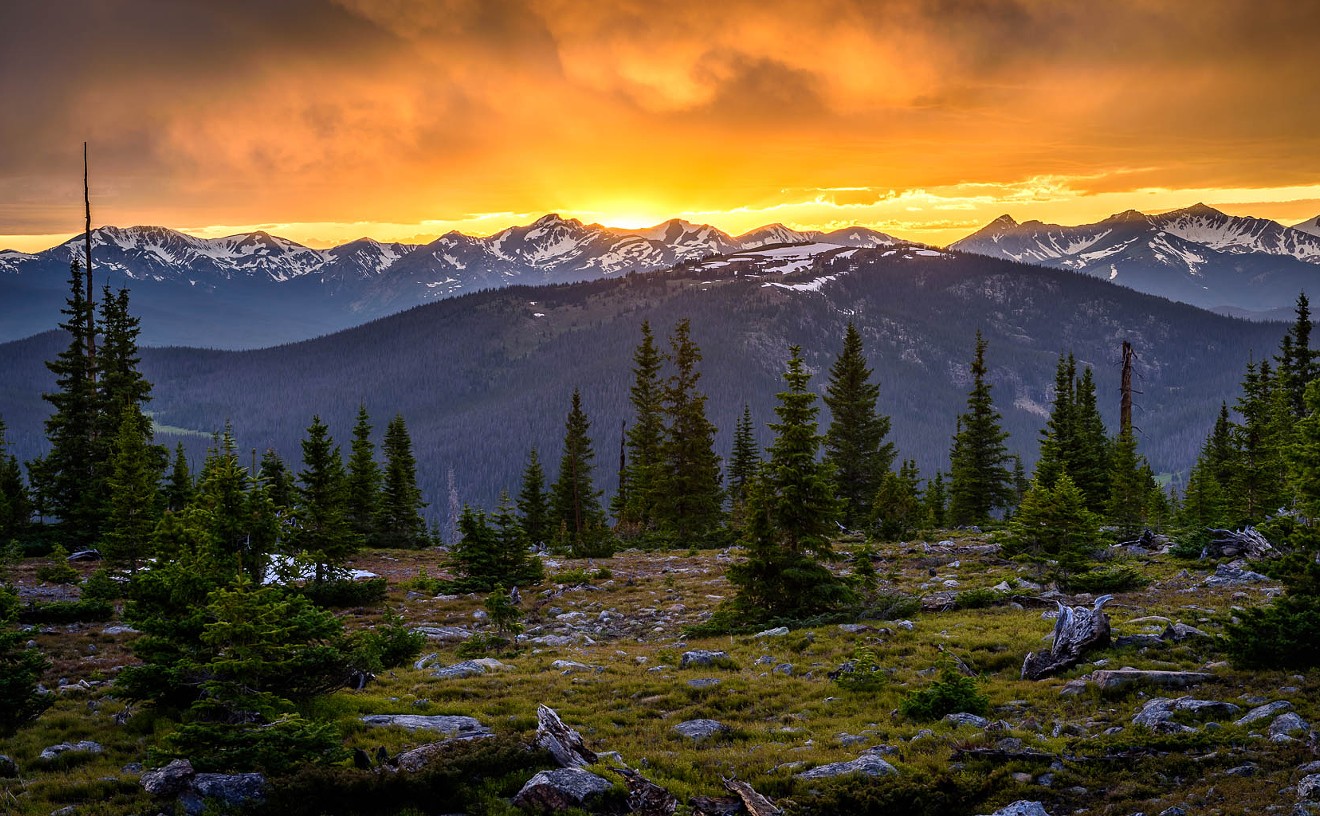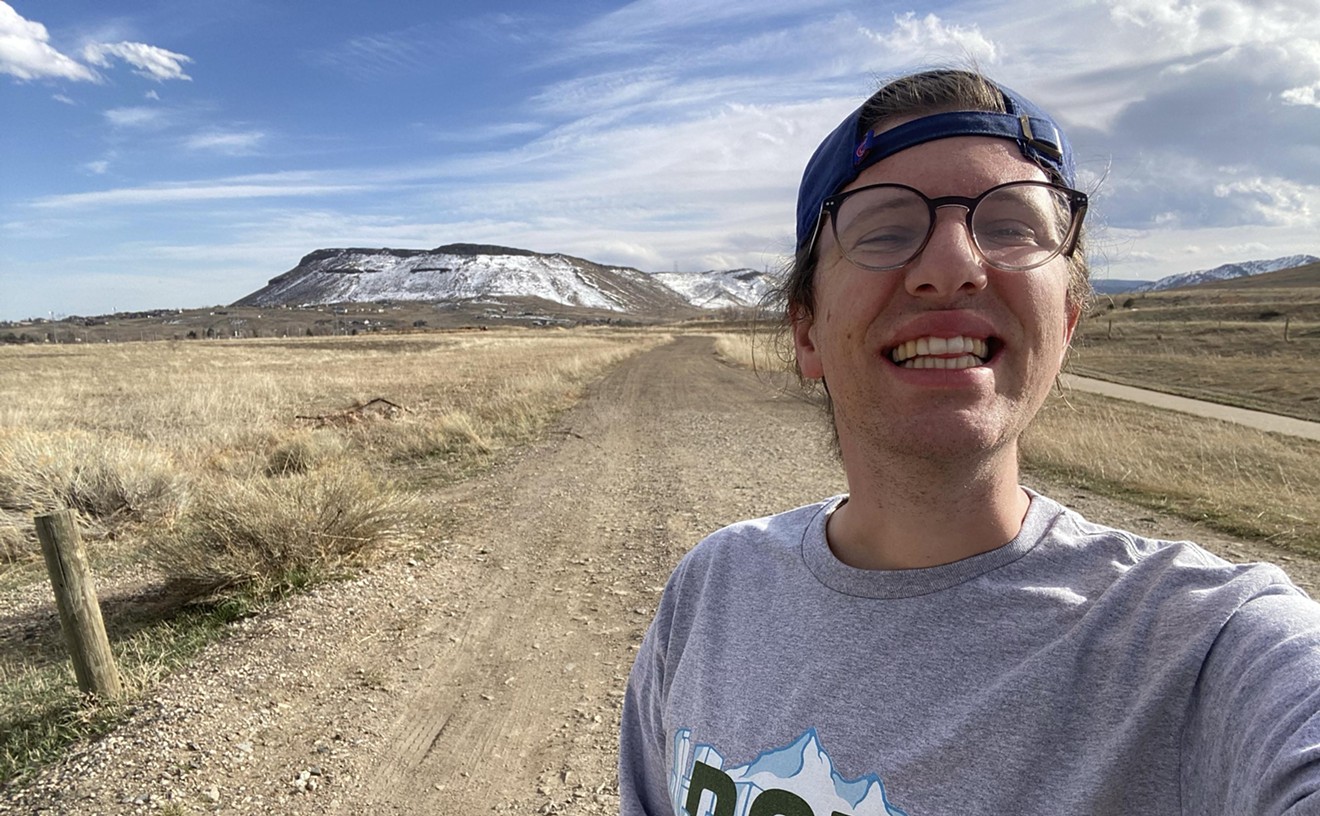Denver's gentrification and racial divides weigh heavily on dancer Kate Speer, the current artist-in-residence at the youth arts nonprofit Platte Forum. She is working with students from Ruby Hill Strive Prep to create a dance exploring segregation. Borderlandia, the production, will "make visible the borders we create, the property we claim and the imagination we inhabit, which frequently impacts and limits the movement – and freedom – of other people," Speer says in a statement about her production, which opens May 11 at PlatteForum.
We caught up with Speer ahead of her Thursday night performance to discuss Borderlandia.
Westword: How did you come to explore this medium of dance? Was there a particular experience or event that instigated your interest in this?
Kate Speer: I’ve been dancing most of my life, choreographing movement to music since I was a young kid. What really shifted and expanded my understanding of what dance could be was my professor Sharon Friedler at Swarthmore College. Sharon taught a course on dancing identities that uncovered the identity politics embedded in dance performance: gender, race, sexuality, and the many intersectionalities. Many categories of identity are mapped onto bodily difference – including race and gender – but expanding to include ethnicity and nationality and even sexuality. Dance signals and enacts these social identities in all their continually changing configurations. More than just choreography, dance develops movement literacy that allows me to understand the ways the body can be a symbol for social identities, a tool to perform these identities, and a medium for their continual creation and re-creation.
Tell me about the students you work with. How do the stories they share and their different backgrounds inform your choreography, worldview and art form? Any particular story that emerged from the learning labs you'd care to share?
I’m working with a group of third-graders, and we’ve been thinking about and creating gestures, which are a movement of part of the body, especially a hand or the head, to express an idea or meaning. The cool thing in introducing this idea is that the students already had a set of culturally specific school gestures — for example, connection: With the thumb pointed towards themselves and the pinkie finger towards the friend, they wave their hand back and forth.
What is task-based choreography?
While I love full-bodied, virtuosic, heart-pumping movement, dance has a way of eluding meaning. In trying to craft a performance experience for the audience, I want to provide them with keys to unlock the meaning. I often incorporate pedestrian tasks alongside movement, because tasks can be very relatable activities or tangible physical sensations. For example, in this show you’ll see one dancer with her mouth taped shut and her body restricted by flagging tape. I suspect that image will generate greater kinesthetic empathy in the viewer more so than if I were to craft movement as a metaphor for restriction. The viewer can more readily imagine the discomfort of having their own mouth covered. By incorporating tasks into the choreography, I am showing the audience an experience rather than a representation.
How has working with community members, particularly youth, shaped your decisions when making art? Shaped your views of dance or the way you choreograph?
I think about community on multiple levels when I’m creating my work — from the microcosm of the studio with the dancers, to the workshops, to the audiences who see my work. I firmly believe all art is political, especially when politics is defined as the control and distribution of resources. When I make work, I hold a position of power for that brief moment in the studio, classroom or theater. I want to consistently cultivate an engaged presence with a sense of responsibility to reciprocity within these communities. In other words, I care about my audience. I want them to understand the dance — not by making the dance simpler, but by crafting the choreography in a way that gives them keys to unlock the meaning. These keys are often the incorporation of text, theater, character, iconic gestures, pedestrian movement, costumes, props and music — all of which hold cultural and personal meanings and memories. I also feel a sense of responsibility to dismantle systems of oppression in my work, point out criticisms in our society, and offer alternative realities for us to aspire to. I believe this is reflected in both the work I make and how I make that work. The process informs the product, so collaboration, honoring different viewpoints in the room, dialoguing across difference, and listening and incorporating feedback from viewers are all part of my creative process.
What is the music like for these pieces, and how do you go about selecting those works?
I’m working with DJ BMONEY, who will be mixing live for the performances. House dance and DJs go hand in hand. DJs are known for being able to craft the energy of the club by reading and observing the dance floor. My intention is that we are creating a sound landscape that fits and supports the movement landscape as well as creating an emotional ride for the audience. Also, because our movement is converging multiple dance styles, I want the music to mix various styles to reflect that.
Borderlandia, 6:30 p.m., May 11, and at 7:30 p.m. on May 19-20, at PlatteForum, 2400 Curtis Street, 303-893-0791, free.
[
{
"name": "Air - MediumRectangle - Inline Content - Mobile Display Size",
"component": "12017618",
"insertPoint": "2",
"requiredCountToDisplay": "2"
},{
"name": "Editor Picks",
"component": "17242653",
"insertPoint": "4",
"requiredCountToDisplay": "1"
},{
"name": "Inline Links",
"component": "18838239",
"insertPoint": "8th",
"startingPoint": 8,
"requiredCountToDisplay": "7",
"maxInsertions": 25
},{
"name": "Air - MediumRectangle - Combo - Inline Content",
"component": "17261320",
"insertPoint": "8th",
"startingPoint": 8,
"requiredCountToDisplay": "7",
"maxInsertions": 25
},{
"name": "Inline Links",
"component": "18838239",
"insertPoint": "8th",
"startingPoint": 12,
"requiredCountToDisplay": "11",
"maxInsertions": 25
},{
"name": "Air - Leaderboard Tower - Combo - Inline Content",
"component": "17261321",
"insertPoint": "8th",
"startingPoint": 12,
"requiredCountToDisplay": "11",
"maxInsertions": 25
}
]












